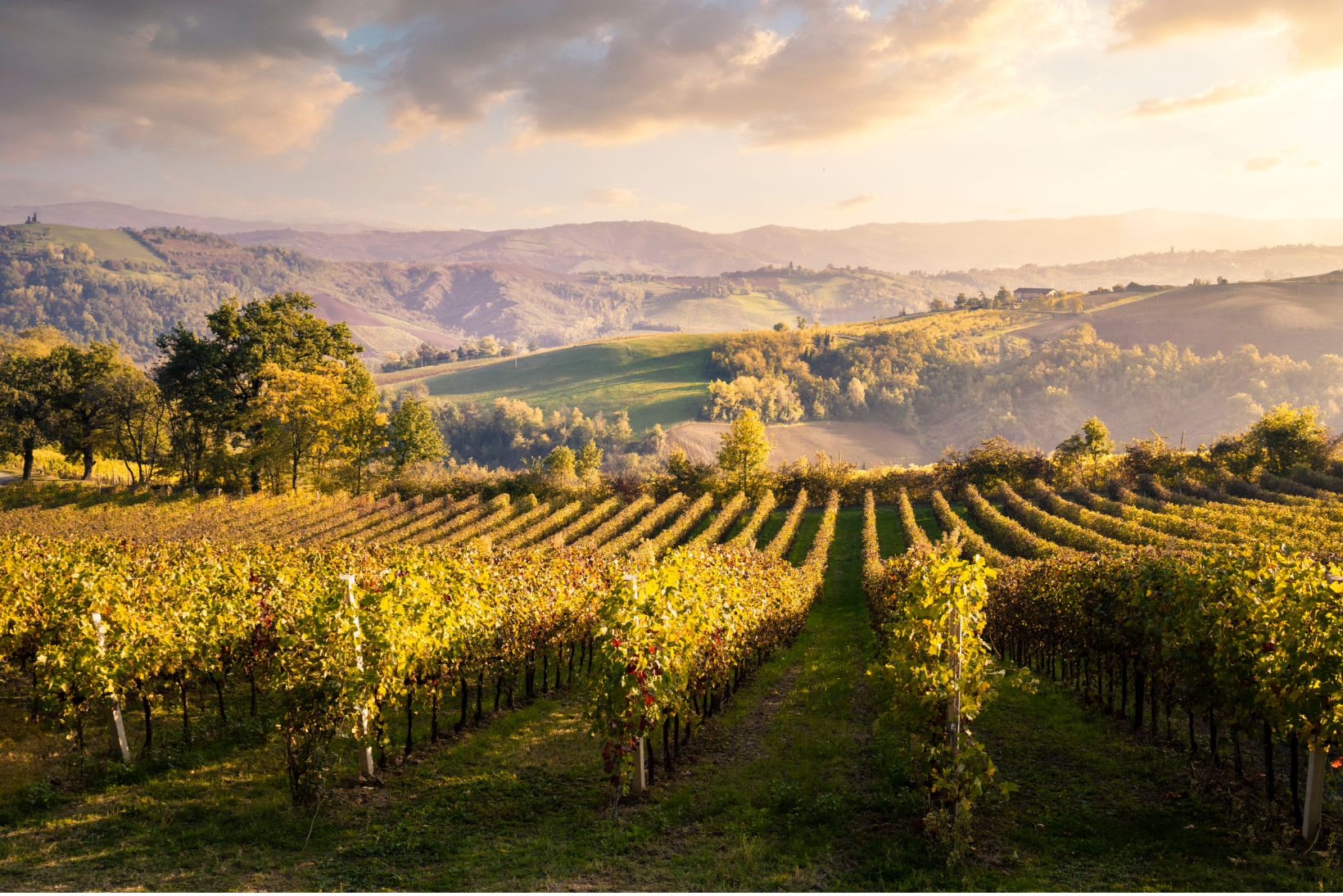
Sangiovese – The story of a vine
Immerse yourself in the fascinating story of Sangiovese, the principal vine variety grown in Italy. Discover its origins and its unique, complex and distinctive characteristics, which succeed in displaying in the glass the soul of the land from which it comes: an absorbing voyage that will reveal the secrets of one of Italy’s most popular varieties.
History and origins
The origins of Sangiovese are ancient and mysterious, with roots that date back to the period of the Etruscans. The name itself, Sangiovese, may derive from the Latin “Sanguis Jovis” (blood of Jupiter/Jove, referring to Mount Giove, near Santarcangelo di Romagna), suggesting a profound connection with the earth and with mythology.Another fairly widely accepted hypothesis links it to “sangue dei gioghi”, or “blood of the hills”.
It is impossible to determine its place of origin with any certainty, because its history gets lost in the mists of time and reliable information prior to the 16th century is lacking. DNA analyses have revealed that Sangiovese derived from crossing Calabrese di Montenuovo, a variety that has almost disappeared, with Ciliegiolo.
Romagna: the cradle of b.io’s Sangiovese
Sangiovese finds its ideal growing environment in the Apennines of Central/Southern Italy, where it succeeds in producing wines of outstanding quality, which have become international icons. Romagna is the cradle of b.io’s Sangiovese.
This region is considered the ideal location for its cultivation thanks to a unique combination of environmental, climatic and cultural factors that enhance this variety to the greatest extent. Here are the reasons
An ideal climate
Romagna benefits from a temperate climate, with warm summers and mild winters. This climate favours slow, uniform ripening of the grapes, fundamental for developing complex aromas and a good tannic structure in Sangiovese.
Rich and varied soils
The soils, rich in clay and limestone, add to the wine their typical acidity and minerality. The diverse compositions of the soil in the various zones of Romagna allow Sangiovese to express a vast range of aromatic and taste profiles.
Marked thermal excursion
The significant differences in temperature between day and night favours the synthesis of the aromas and colour stability in the grapes, resulting in more highly scented and well-structured wines.
Winemaking tradition
Romagna boasts a long tradition of wine production, with generations of vine-growers who have developed a profound knowledge of Sangiovese. This traditional expertise, combined with innovative vinification techniques, allows us to obtain very high-quality wines.
Distinctive characteristics of Sangiovese
In appearance, it displays a medium-deep cherry red hue, which already suggests the liveliness and freshness of the wine. This colour may vary slightly depending on the zone of origin and the vintage, but it always maintains a characteristic brightness.
On the nose, Sangiovese offers a rich and varied bouquet. The dominant notes are those of Morello cherries, ripe plums and violets; then, adding depth and complexity to the wine’s aromatic profile, there are faintly spicy hints. Medium-bodied, on the palate it displays evident acidity and fine, but marked, tannins.
The b.io range
Sangiovese, Lambrusco, Primitivo, Nero d’Avola (red and rosé), Catarratto Chardonnay and Novebolle sparkling wine: discover the b.io range and continue following us to get to really know our grape varieties and immerse yourself in the richness of their areas of origin.
ALL THE ARTICLES
